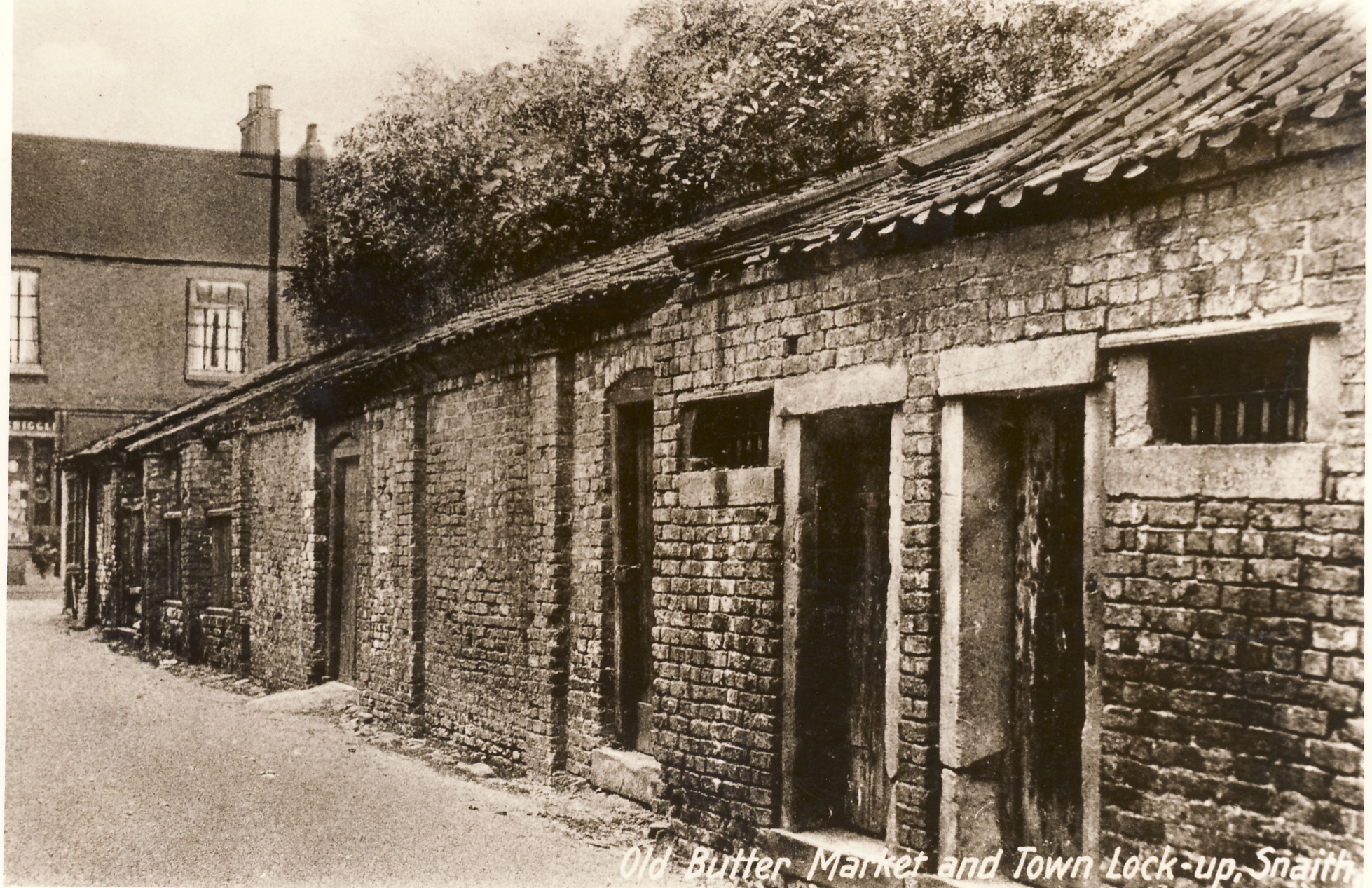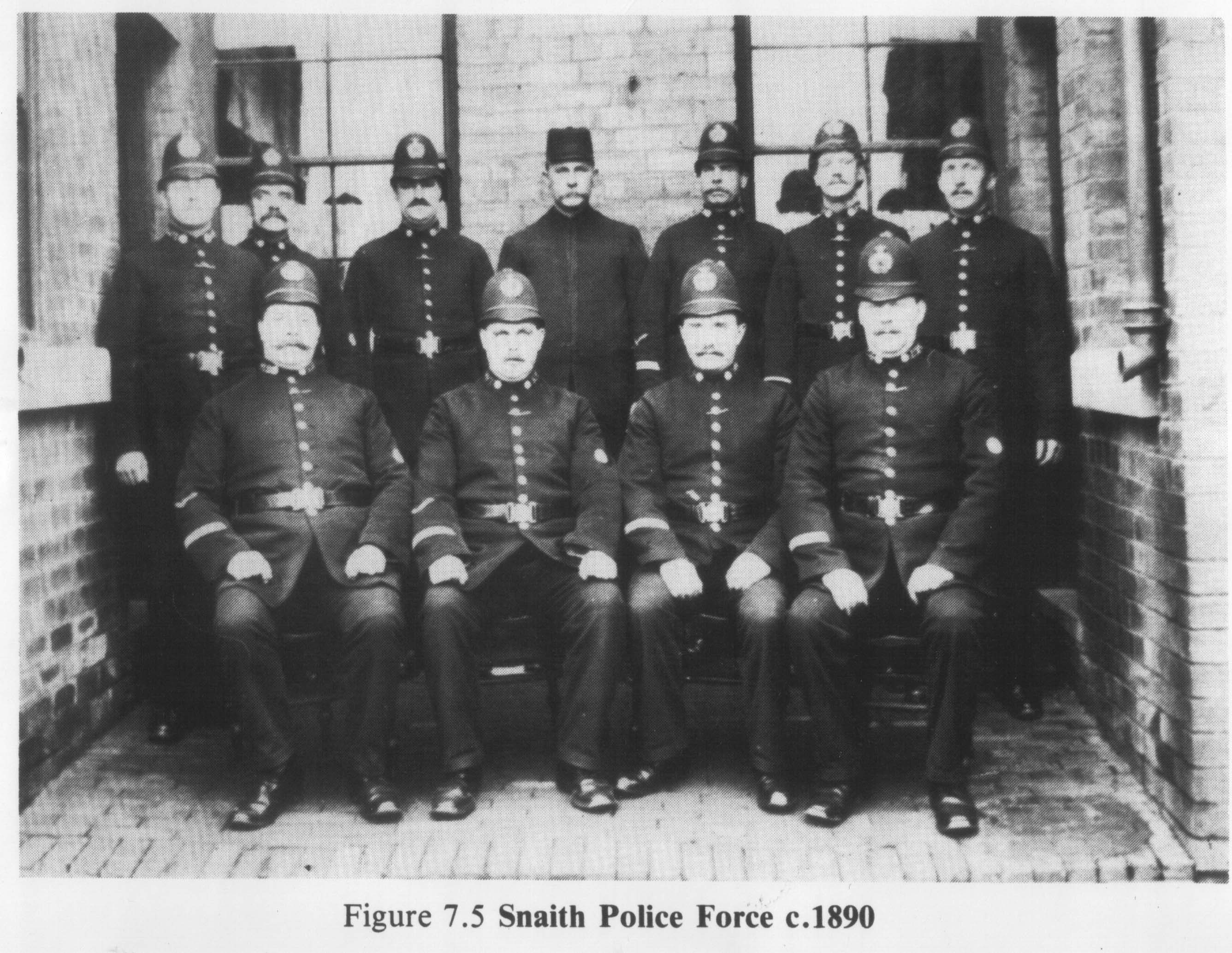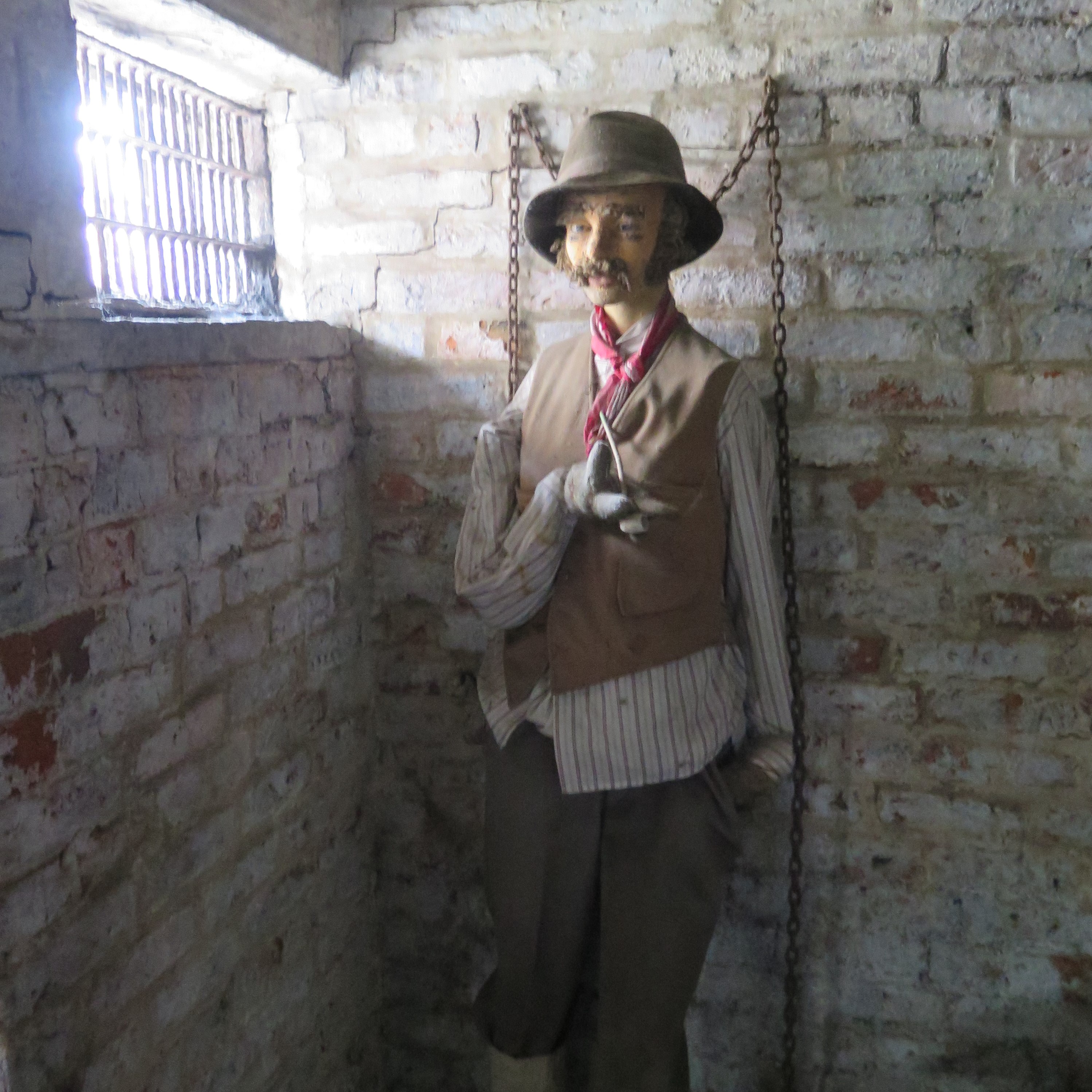SNAITH LOCK-UP

The Lock-Up is on the right.
The buildings on the left were The Buttermarket It is probable that this row of buildings were built at the same time as The Lock-Up C1790
![]()
This is the other side of The Lock-Up. It was a Shed/Garage for The Snaith Fire Engine.
In the 18th century, Snaith was a busy market town. The nearest similar towns were Howden, 10 miles away, Thorne and Selby, both 7 miles away. All three were separated from Snaith by a ferry crossing. In 1777 a bridge was built across the River Aire at Snaith and sixteen years later a new turnpike road was created between Bawtry and Selby, which brought increased traffic into Snaith.
New houses were built and specialist shops began to appear. There was an increase in the population which inevitably led to an increase in anti-social behaviour. At that time, The Parish Constable was responsible for upholding law and order in the town. He
was able to hire deputies, as required, in order to keep the peace.
In 1790 The Vestry Board invested in the construction of SNAITH LOCK-UP in order to detain people who were suspected of
criminal activities. It was built adjoining The Market Hall, which was a row of stalls for the sale of butter, cheese and related products. These goods had been sold on this site for over 200 years from movable stalls.
Serious offenders were sent to York for trial and sentence. For Petty offences, there was a weekly Manorial Court held at the Snaith Court House on the first floor of The Downe Arms. Prison cells were located in the cellar and there were also prison cells in the cellar of The Manor House on Selby Road. The Priory Church had a Consistory Court that dealt with people breaking church laws and fines were issued to offenders.There was also “The Court of PiePowder” that sat on 11th August each year at the end of a two-day Annual Fair. The name comes from the French “Pieds Poudre” which means dusty feet and refers to travellers who visited the various fairs up and down the country. The court would put on trial any body that had been apprehended for breaking the rules of the Fair. The LOCK-UP was often used on these days.
In 1815, The Snaith Association for the Prosecution of Offenders was formed offering rewards to people who supplied information that resulted in a conviction.
In 1847, following a spate of disastrous fires caused by arsonists, a public meeting was called and The Snaith & Cowick Police Association was formed. They appointed a Constable and a deputy. A Cattle Protection Society was also created, but it only had a short life.
In 1856 The West Riding of Yorkshire Constabulary was launched and they took over total control of law enforcement in the county, although The Manorial Court still functioned until 1934.
In 1863 a new courtroom was created on Back Lane Snaith (now Court Road) by converting the former Wesleyan Methodist Chapel.
In 1881 The Police Sergeant was James Marshall
In 1891 a new position of Inspector in Snaith was created and the first man appointed was James Punton aged 43, previously a sergeant at Brighouse.
In 1897, Queen Victoria's Diamond Jubilee Year, a new police station and prison cells were erected on the same site as the courtroom. The SNAITH LOCK-UP was now well and truly redundant.
The Court Road premises served Snaith until 1974, when they were closed due to county boundary re-organisation. It is now a private residence. (number 22 on Snaith Heritage Walk)


THIS IS A MOCK-UP OF A PRISONER INSIDE THE LOCK-UP. THIS IS THE WINDOW HE CAN SEE THROUGH.
